It’s our great hope that each of you, our readers, will fully appreciate and enjoy this article about these 4 Fabulous Flora of Florida. It was certainly a great pleasure for us to compile the information for you. May it provide you with both education and increased awareness.
Obviously, however, the species listed herein represent only a tiny handful of he botanical marvels to be found in this region. It’s our belief, though, that they serve as excellent examples of the variety of wonders to be found. You’ll find similar species in other articles.
American Wisteria Facts
- Leading off this article about 4 Fabulous Flora of FLorida we present the aptly-named vine known as the American Wisteria.
- Most notably, the descriptive term given to it applies to a magnificent variety of woody climbing vine, from the Family Fabaceae. Professional researchers and botanists, however, typically refer to it by its very similar scientific name.
- That’s the comparatively simple, for a technical term, name of Wisteria frutescens. The renowned Swedish botanist Carl Linnaeus made the first official description of this gorgeous flora. This action occurred in the late 18th century.
- Much like many other beautiful plants, its great beauty conceals a somewhat dark secret, though. That holds true due to the fact that many parts of the seemingly delicate species contain a type of toxic chemical known as a saponin.
- Ingestion of even a few of the seed pods it produces can cause extremely unpleasant symptoms. These experiences rarely prove fatal to the hapless victim, however. Nevertheless, cautions should be taken when interacting with the beauty.
- For the moment, the fabulous American Wisteria appears to have a stable population throughout the entirety of its natural range. This also appears, at least for the moment, to hold true throughout the entirety of its native range.
- It also now appears in many parts of the world as a decorative plant. The IUCN, therefore, currently has no listing for it. It could be considered to be facing at least one threat to its existence, though. That would be the danger of climate change.
American Wisteria Physical Description
The fabulous species known commonly as the American Wisteria represents a stunning variety of flora. But its beauty alone isn’t the only amazing quality it possesses. Nature and evolution, it seems, truly blessed this particular variety of Angiosperm.
That’s because this marvelous vine also has the impressive ability to grow to incredible lengths. In point of fact, individual specimens of this particular variety of Wisteria sometimes reach staggering lengths. Some measure as much as 50 ft (15 m).
The stunning American Wisteria also has yet another quality to add to its visual appeal, however. That’s the fact that it also produces numerous clusters of beautiful flowers. The delightful hues of these blossoms, in such numbers gives it a magnificent presence.
These beauties further typically develop with a lovely blueish-purple color. Remarkably, those delicate clusters sometimes grow to as long as 6 in (15 cm). The foliage, meanwhile, consists of shiny dark-green leaves that range in length from roughly 6-12 in (15-30 cm).
- Kingdom: Plantae
- Phylum: Angiosperm
- Class: Eudicots
- Order: Fabales
- Family: Fabaceae
- Genus: Wisteria
- Species: W. frutescens
American Wisteria Distribution, Habitat, and Ecology
Quite unfortunately, the breathtaking vine known as the American Wisteria evolved as native to a restricted portion of North America. That regrettably limited zone of habitation currently consists of only certain portions of the southeastern section of the United States.
More specifically, the marvelous variety of flora mainly appears from the state of Virginia to the state of Texas. Scattered populations, however, also appear in the states of New York and Michigan. Human actions may have potentially spread the plant further.
Even within this restricted range, however, the gorgeous vine has definite preferences in its choice of habitat. That’s because, when left to its own devices, it appears almost solely in regions consisting of various wetlands, and sometimes along some river banks.
The fascinating plant’s also an almost unsurpassed opportunistic climber. In fact, this incredible species, clings to and climbs virtually any support available to it. Perhaps most commonly, though, this available support consists of various trees.
The magnificent American Wisteria further distinguishes itself from related species in yet one more fashion. That holds true due to the fact that, unlike those of other types of Wisteria, its blooms possess no noticeable fragrance. The reason for this remains a mystery.
Blooming in the very early Spring, those same blossoms also have a characteristic different from related species. That’s because they evolved very short blooming periods. Wherever it appears, this gorgeous work of Nature also prefers direct sunlight.
Death Apple Tree
Death Apple Tree Facts
- The second species appearing in this listing of 4 Fabulous Flora of Florida is the startling creation of Nature known as the Death Apple Tree.
- The name given to it represents only one of the common names applied to this particular variety of tree. The choice does, however, unquestionably form the most attention-grabbing of the several most frequently used names for the fascinating flora.
- Its other names include those of the beach apple and the Manchineel. The official scientific name for the species, though, remains somewhat difficult to pronounce for most of us. That’s because scientists know it as the Hippomane mancinella.
- This spectacular, and surprising, flora owes its original classification to the noted Swedish botanist and zoologist, Carl Linnaeus. The highly respected scientist made the first known formal recognition of it as a separate and distinct species in the year 1753.
- By whatever name one chooses to call it, though, one fact about it stands out from the rest. That’s the fact that it also ranks as toxic in nature. In point of fact, this otherwise lovely plant currently represents one of the most poisonous trees known to man.
- For the moment, the somewhat deceptive Death Apple Tree appears to be maintaining a sufficient and stable population. This trend also seems to hold true throughout the entirety of its native range. The IUCN, therefore, list it as Least Concern on its Red List.
- The plant nevertheless does face certain threats that could change that status in the near future. The chief of these, like many species, remains the danger posed by climate change. It also faces the strong threat of habitat loss, due to man’s ongoing expansion.
Death Apple Tree Physical Description
The astounding Death Apple Tree accomplishes something that not every species does. That’s true since it impresses those who know of it in several different ways. One of those is its sheer size, because mature specimens manage to achieve a relatively significant height.
Exceptional individuals, in fact, attain heights of as much as 49 ft (15 m). That’s certainly not huge, of course, but it nonetheless merits appreciation. The great majority of specimens, however, typically remain somewhat shorter than this in terms of total height achieved.
The bark of the awesome Death Apple Tree, meanwhile usually presents as a reddish-gray in color. Its leaves typically display a finely-toothed structure along the edges. This foliage further averages between 2 -4 in (5 – 10 cm) in length, and develops as a light green in color.
It most highly noted feature, though, remains the one from which its common name derives. That’s its remarkable fruit, which eventually follows its greenish-yellow flowers. While all parts of the tree, remarkably, contain toxins, the fruit remains the most highly toxic.
- Kingdom: Plantae
- Phylum: Angiosperms
- Class: Eudicots
- Order: Malpighiales
- Family: Euphorbiaceae
- Genus: Hippomane
- Species: H. mancinella
Death Apple Tree Distribution, Habitat, and Ecology
Quite fortunately for the flora, the Death Apple Tree evolved as native to a relatively broad section of the world. That region actually covers a significant portion of the Northern Hemisphere. Its population therein, however, remains somewhat scattered in nature.
More precisely, though, it appears in portions of northern South America, Central America, Mexico, the Bahamas, and the Caribbean. A relatively small population of the dangerous but visually appealing tree also appears in part of the state of Florida.
Although forced to adapt to other habitats in some locations, it shows a decided preference for where it appears. In the majority of its range, the tree therefore usually grows in one of three regions. These consist of brackish swamps, coastal beaches, and mangrove forests.
The highly toxic nature of the remarkable Death Apple Tree renders it immune to the depredations of most creatures. A few, however, do manage to interact with the tree safely. One species of iguana, in fact, manages to live in the canopy, and also eat the fruit safely.
For most other creatures, though, it’s an extremely hazardous plant. The toxins contained in all parts of it remain quite potent. Its own sap, furthermore, frequently causes severe burns to skin when exposed to it. It’s even been known to occasionally peel the paint off of cars!
Even taking shelter beneath one of these trees in a rainstorm can be dangerous. Exposure to even a single drop, as it absorbs the toxins before falling, will cause the skin to blister. If parts of the tree are burned, exposure to the smoke can also cause severe eye irritation.
Honeysuckle
Honeysuckle Facts
- Placing third in this compendium of 4 Fabulous Flora of Florida, the delightful plant typically known simply as the Honeysuckle does so only due to random selection.
- Perhaps surprisingly to some, the term used for it actually names an entire Family of stunningly beautiful plants placed in the Caprifoliaceae family. Due to this, each of these remarkable species develops as either arching shrubs or twining vines.
- A remarkable total of roughly 180 recognized species of the plant further exist at this time. Several other species, however, remain under consideration for inclusion in the group at this time. Consideration of that status remains ongoing by researchers.
- All of the acknowledged members of this truly impressive Family of plants additionally share yet another characteristic. This particular one, however, has nothing to do with biology. In this instance, though, it’s a matter of general geography.
- That’s because all known varieties of this sweet-smelling and brilliantly colored plant evolved as native to the Northern Hemisphere. This geographical restriction also applies to those species presently being considered for inclusion in group.
- As of now, roughly 100 of the recognized Honeysuckle forms remain endemic to the country of China, in Asia. The continents of Europe and North America, along with the country of India, each further serve as home to 20 of the member species.
- The remaining forms of this marvelous Family appear scattered throughout various locations in the continents of Australia and Africa. Members of its group therefore benefit from one of the widest ranges of distribution currently known to science.
Honeysuckle Physical Description
Impressively, the majority of the known types of Honeysuckle evolved as comparatively strong twining climbers. On all of these, the leaves grow opposite, and develop as simple ovals. This visually appealing foliage also averages about 4.5 in (10 cm) in length.
Although most evolved as deciduous, some develop as evergreens. Many of the individual species also produce strongly sweetly-scented flowers. These blooms also produce small quantities of sweet, edible nectar. Most of the flowers develop in clusters of two.
Both shrubby and vining sorts have strongly fibrous stems which are suitable for binding and textiles. Like many beautiful plants, however, Honeysuckle has a somewhat dark secret. That’s because the fruit of the Angiosperms possess low level of poisonous compounds.
In appearance, these fruits possess either a spherical or somewhat elongated shape. The most commonly seen colors of the fruit include red, blue, and black. Nonetheless, on rare occasions, specimens produce this aspect of the plant in a wide range of hues.
- Kingdom: Plantae
- Phylum: Angiosperms
- Class: Eudicots
- Order: Dipsacales
- Family: Caprifoliaceae
- Genus: Lonicera
Honeysuckle Invasiveness
Amazingly, while the fruit of many varieties of Honeysuckle evolved to be toxic, this does have some uses. That holds true due to the fact that, in a few cases, the fruit of the Angiosperm, while quite tiny, can be consumed and even used for types of commerce.
This part of the stunning plants also has other natural uses, though. This remains true because the berries of most forms also remain attractive to numerous forms of local wildlife. For example, a wide variety of butterflies and hummingbirds love them.
Quite unfortunately, however, several species within this remarkable Family have now become invasive. This occurred when they were introduced outside their native range. This remains particularly true in both New Zealand and the United States.
Honeysuckle Popularity
Due to its many qualities, the Honeysuckle has now become popular in many regions of the world. This most commonly manifests itself in using it as a garden decoration. Many people use it both because it smells beautiful, and covers unsightly walls and outbuildings.
This gorgeous and colorful plant has also become quite popular for its sheer pleasure to the different senses. In fact, a great number of people find it pleasant to use for the numerous blooms it produces in the summer. These form as quite beautiful and highly aromatic.
The hardy climbing types of Honeysuckle do have certain specific needs. That’s because most forms need the roots in shade, but the tops prefer sunlight or very light shade. Finally, the varieties one uses also need to be chosen with care because most grow prolifically.
Pine Lily
Pine Lily Facts
- Closing out this compilation of 4 Fabulous Flora of Florida we present the remarkable flower known best as simply the Pine Lily.
- Somwhat surprisingly, the simple term applied serves as the common name of a beautiful, but often under appreciated variety of lily. It also goes by several other common names. These include the leopard lily, southern-red lily, and the Catesby’s lily.
- Professional researchers, though, have an altogether different term used for it. That’s because this marvel of Nature bears the official scientific name of Lilium catesbaei. Regardless of the name applied, it represents a truly fascinating ad appealing species.
- The seemingly delicate appearance of this flora belies its character, however. That’s because the work of Nature actually displays a remarkable degree of adaptability. In fact, it evolved to inhabit environments normally inhospitable to most types of lilies.
- Surprisingly, the IUCN does not yet list the Pine Lily on its Red List of Threatened Species. That may well change in the future, given changing conditions. The natural beauty nevertheless must be considered to be at risk, due to several factors.
- One of these perils, like many species, consists of habitat loss. This holds true mainly due to human encroachment on its natural habitat. Given the nature of its habitat, though, its most serous threat no doubt consists of ongoing climate change.
Pine Lily Physical Description
Perhaps most notably, the truly gorgeous Pine Lily constitutes a physically impressive type of flora. It also accomplishes this for more reasons than just its beauty. In this it clearly displays its relationship to the many other remarkabale varieties of lilies around the world.
That’s due to the fact that, in addition to its visual appeal, it also attains a much greater size than most. Additionally, as if the other facts weren’t enough, this description actually holds true because of its measurements in entrely two entirely separate categories.
In point of fact, the seemingly delicate plant ranks as the largest variety of lily on the continent on which it evolved. Yet the wonders do not end there. For starters, the long and thin, but relatively strong, straight stalk attains an average height of roughly 2 ft (61 cm).
Atop these stalks, furthermore, the plant produces its remarkably beautiful, large flowers. These blooms attain an average width measuring roughly 6 in (15 cm). Each of those same stalks also most commonly possesses only a few, comparatively small leaves.
Each of the large, magnificent blooms of the amazing Pine Lily produces a total of six separate tepals. These bend sharply outward from the center. Within the center stands a total of six thin stalks, topped with small structures, in which it produces its seeds.
This creation of Nature and evolution also dazzles those who encounter it with its array of hues. These natural colors also tend to vary significantly. The great majority, however, tend to be bright, primarily orange, with multiple spots. Other shades also occur occasionally.
- Kingdom: Plantae
- Phylum: Angiosperms
- Class: Monocots
- Order: Liliales
- Family: Liliaceae
- Genus: Lilium
- Species: L. catesbaei
Pine Lily Distribution, Habitat, and Ecology
Most unfortunately for those who appreciate it, the visually beautiful and impressive species commonly known as the Pine Lily inhabits a somewhat restricted range. Part of that lamentable fact, however, stems from its very nature. This sometimes happens in Nature.
For the moment, though, it remains unknown if this marvelous flora ever possessed a greater range. Given its particular environmental requirements, though, this appears to be unlikely. Research nevertheless remains ongoing into this, and other aspects of its nature.
That range consists of only a relatively small portion of North America. More specifically, it evolved as endemic to the coastal regions of southeastern United States. As a result, the plant appears in an area that extends roughly along the east coast, from Alabama to Virginia.
The majority of individuals appear in Florida. That’s understandable, given its physical needs. That’s because this variety of lily prefers very damp areas and requires a specific environment to thrive. This includes warm temperatures, high humidity, and acidic soil.
Although the Pine Lily requires warmth, it does not tolerate direct sunlight well. Yet, the astonishing Angiosperm also prefers a very specific, and uncommon, soil type. Incredibly, this fabulous wonder of Nature actually prefers regions containing a high level of acidity.
4 Fabulous Flora of Florida
We sincerely hope that you have all thoroughly enjoyed reading, and hopefully learning from, this articlea bout 4 Fabulous Flora of Florida. It’s also our fervent hope that having done so has left you with either a new or renewed appreciation for such wonders of Nature.
Sadly, however, many of their related species now find themselves facing dire threats to their continued existence. Many of these dangers stem from the actions of man, either directly or indirectly. It’s up to each of us to do all we can to protect and preserve such creatures.
Check out our other articles on 5 Bewildering South American Birds, Earth’s Many Magical Moths, 3 Astonishing African Lizards, Earth’s 7 Rarest Butterflies, 7 Outstanding Orb Weavers
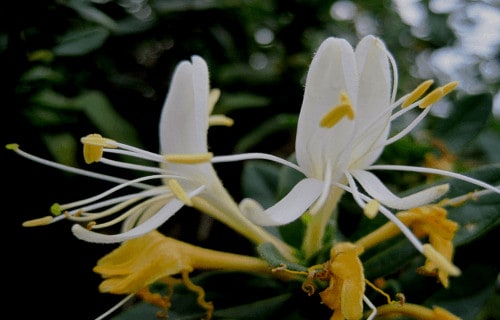
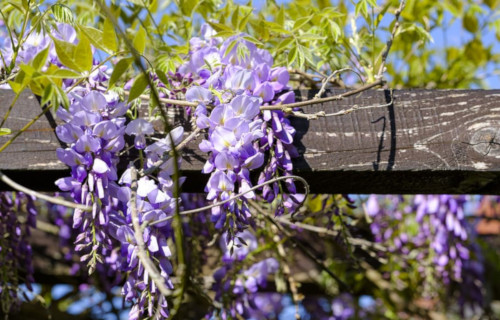
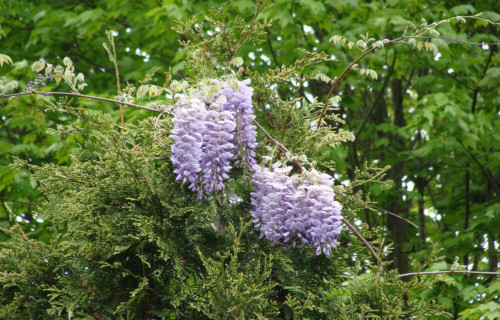
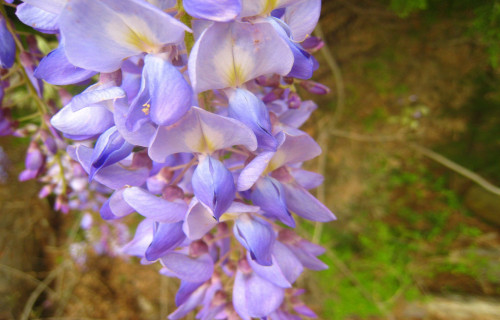
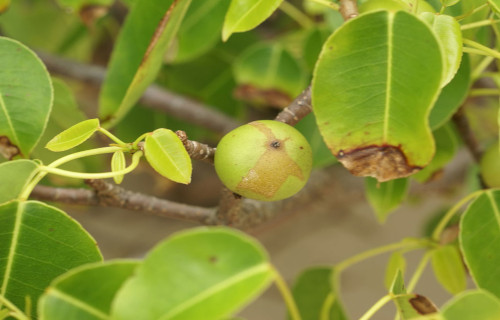
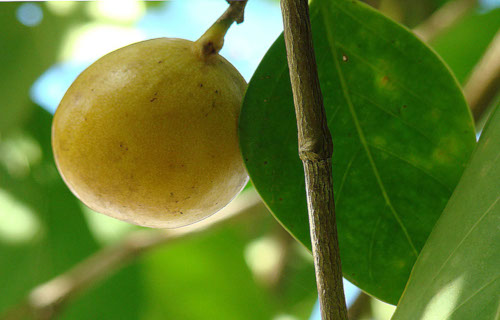
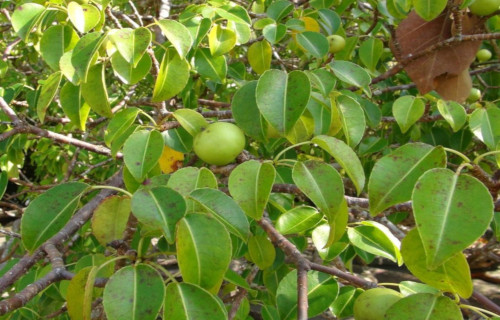
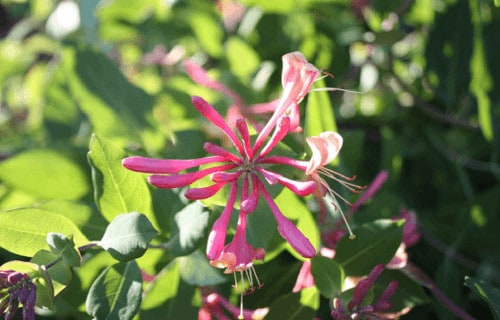
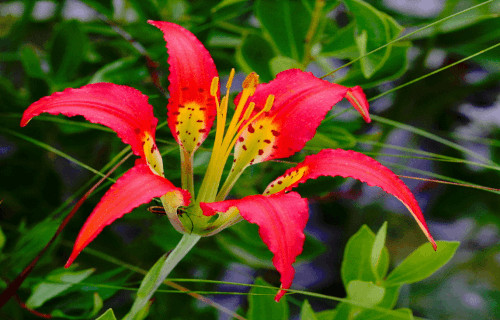
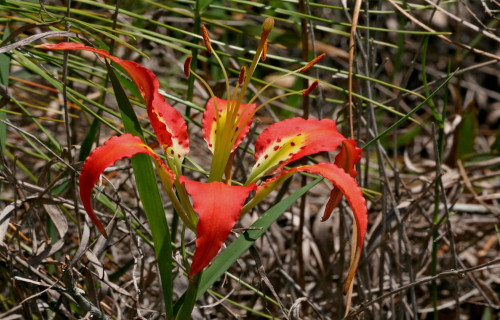
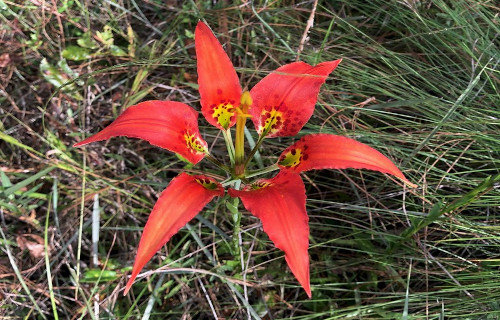
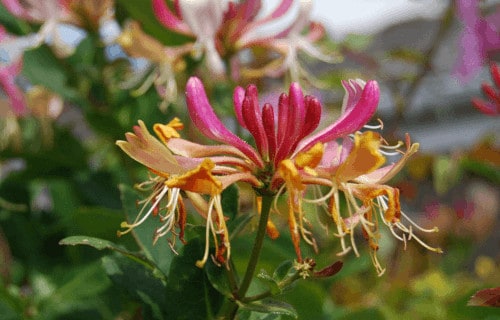









Leave a Reply